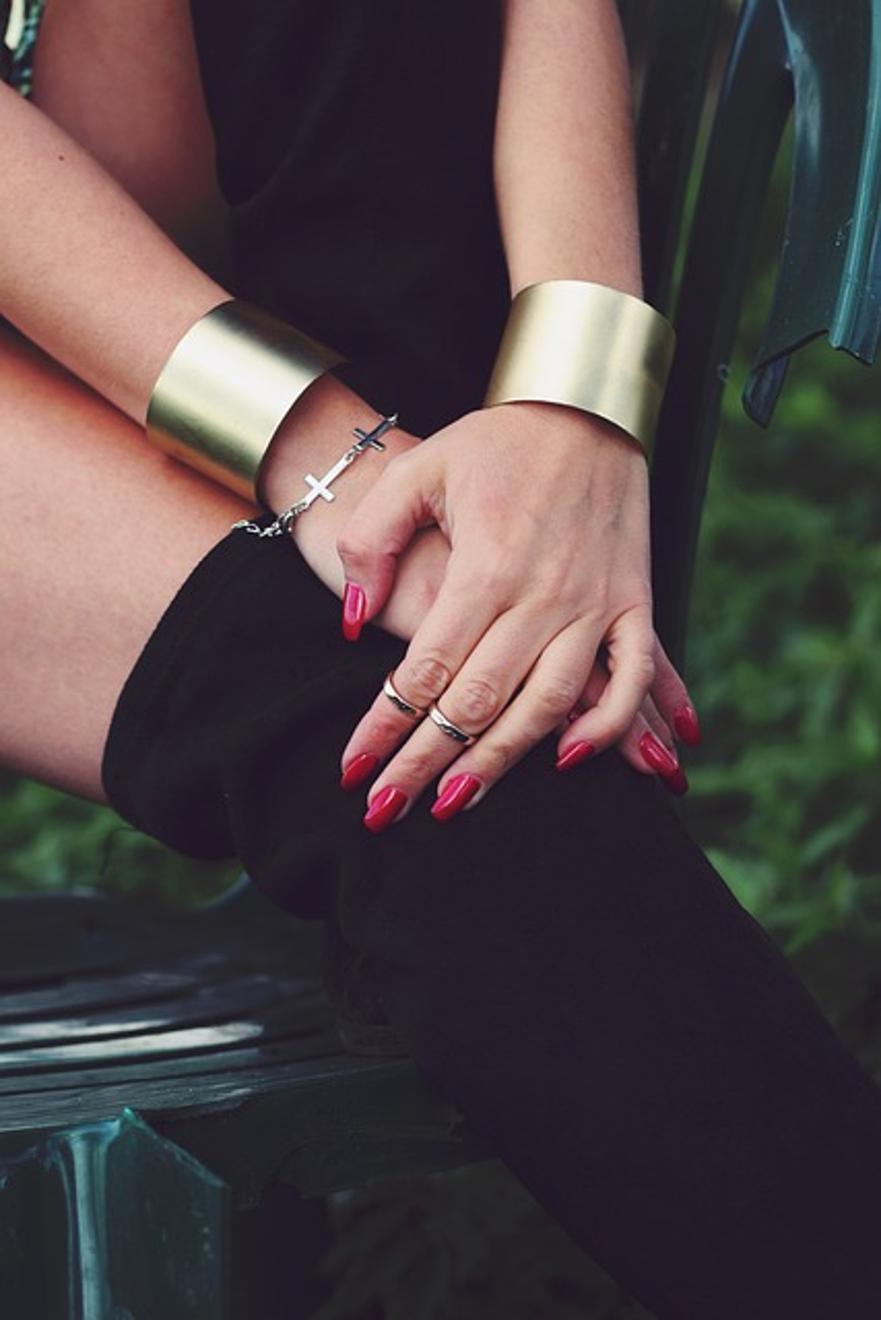Introduction
Creating a handmade cuff bracelet can be an incredibly rewarding process, allowing you to express your style and craftsmanship. Whether you are a beginner or an experienced jewelry maker, making a cuff bracelet involves various activities, from selecting materials to showcasing your finished piece. This guide will walk you through each step, providing detailed instructions and tips to help you create a beautiful, one-of-a-kind cuff bracelet.
With the right materials, tools, and a bit of creativity, you can craft a bracelet that suits any occasion. Soon, you’ll be wearing or gifting a piece of jewelry that is both fashionable and personally significant. Let’s dive into the exciting world of cuff bracelet making!

Materials Needed
To begin with, gather all the necessary materials and tools. Here is a list of what you will need to make a basic cuff bracelet:
- Metal Sheet: Brass, copper, or silver are good choices. The sheet should be thick enough to hold its shape but thin enough to bend.
- Jeweler’s Saw: Used for cutting metal to the desired size and shape.
- Metal File: Helps to smooth out rough edges after cutting.
- Hammer and Bench Block: For shaping and texturing the metal.
- Mandrel or Bracelet Form: Used to shape the metal into a cuff.
- Sandpaper: Different grits for smoothing the bracelet.
- Decorative Elements: Stones, beads, wire, or stamps for personalizing your bracelet.
- Adhesive: A strong, jewelry-grade adhesive for attaching decorative elements.
- Polishing Cloth: To give a shiny finish.
Having these materials at hand will ensure a smooth crafting process. Make sure they’re all within easy reach before you start.

Preparing Your Work Area
An organized and clean work area is crucial for efficient jewelry making. Find a well-lit space with a flat, stable surface to work on. Cover your work area with a protective mat to safeguard your table and materials. Place all your tools and materials within arm’s reach to avoid any interruptions during the crafting process.
Make sure you have adequate ventilation, especially if you’re using adhesives or any other chemicals. Proper lighting will also help you see the finer details, preventing any mishaps while working with small components.
Designing Your Cuff Bracelet
Designing your cuff bracelet is where your creativity comes into play. Start with a sketch of your design on paper. Consider the following factors while designing:
- Size: Measure your wrist to determine the length and width of the cuff. Standard cuffs are typically about 6 inches long and 1-1.5 inches wide, but you can adjust according to your preference.
- Shape: Decide if you want the edges to be rounded or square. You might also want to include cutouts or intricate patterns.
- Texture: Think about whether you want the metal to be smooth, hammered, or stamped with patterns.
- Decorative Elements: Plan where you will add stones, beads, or other embellishments.
- Finish: Contemplate whether you want a polished, matte, or oxidized finish.
Sketching your design helps you visualize the final product and identify any potential issues before you start crafting. Take your time to plan out your design to ensure a cohesive and beautiful finished piece.
Crafting the Metal Base
Once your design is ready, it’s time to craft the metal base for your cuff bracelet. Follow these steps:
- Cutting the Metal: Using your jeweler’s saw, cut the metal sheet to the desired size according to your sketch. Ensure to cut slowly and steadily to get clean edges.
- Smoothing the Edges: Use a metal file to smooth out the sharp edges. Be careful to file in one direction to avoid creating more rough edges.
- Shaping the Metal: Place the cut metal piece on a bench block and use a hammer to shape it. For a smooth curve, use a bracelet mandrel or form to guide the shaping process. Hammer gently to avoid creating unwanted marks or dents.
- Texturing (Optional): If your design includes a textured pattern, use a hammer or stamping tools to create the desired effect.
Take care to check the shape and fit as you go along, making adjustments as necessary to ensure the cuff is comfortable to wear.
Adding Decorative Elements
Now comes the fun part: adding decorative elements to your cuff bracelet. Depending on your design, you can use various adornments to make your bracelet unique. Here’s how you can do it:
- Attach Gemstones: If your design includes gemstones, use a jewelry-grade adhesive to secure them to the metal base. Allow the adhesive to set as per the manufacturer’s instructions.
- Add Wire Designs: Incorporate wire wrapping elements by wrapping thin wire around parts of the cuff, adding beads or small charms as you go.
- Stamping and Engraving: Use stamping tools to add initials, symbols, or patterns to the metal. This adds a personal touch to your bracelet.
- Beading: Sew or glue beads onto the cuff if your design includes beadwork.
Each decorative element should be carefully placed to complement the overall design while ensuring they are securely attached.

Finishing Touches
After adding decorative elements, it’s time for the finishing touches to perfect your cuff bracelet. Follow these steps:
- Sanding: Use sandpaper with varying grits to smooth out any rough spots on the metal surface. This ensures a polished and professional finish.
- Polishing: Use a polishing cloth to buff the bracelet, giving it a shiny finish. Be sure to polish every part of the bracelet for a consistent look.
- Inspecting: Carefully inspect your bracelet for any remaining rough edges or unsecured elements. Make any final adjustments necessary.
These finishing touches not only enhance the appearance of your bracelet but also ensure it’s safe and comfortable to wear.
Showcasing Your Bracelet
With your cuff bracelet now complete, it’s time to showcase your work. Here are some ideas:
- Photography: Take high-quality photos to capture the details of your craftsmanship. Use a clean background and good lighting to highlight your bracelet.
- Social Media: Share your creation on social media platforms like Instagram, Pinterest, and Facebook. Tag your posts with relevant hashtags to reach a wider audience.
- Jewelry Displays: If you sell your jewelry, consider using professional displays to showcase your cuff bracelet at markets or in-store.
- Gifting: Handmade cuff bracelets make wonderful gifts. Consider packaging your bracelet in a beautiful box with a note about the crafting process.
Displaying your bracelet effectively allows others to appreciate your hard work and creativity.
Conclusion
Making a cuff bracelet is a creative and fulfilling project that results in a unique piece of jewelry. By following this guide, from gathering materials to adding the finishing touches, you can craft a cuff bracelet that reflects your personal style. Remember to take your time during each step and enjoy the process.
With practice, you can experiment with more complex designs and materials. Happy crafting!
Frequently Asked Questions
What materials are best for making a cuff bracelet?
The best materials for making a cuff bracelet are brass, copper, and silver. These metals are not too hard to shape and provide a beautiful finish. You can also experiment with other metals as you become more experienced.
How do I ensure the right size for my cuff bracelet?
Measure your wrist circumference and add an extra inch for comfort. Standard cuff bracelets are about 6 inches long. It’s better to start larger because you can always trim down the size. Always test-fit the bracelet as you shape it to ensure it fits comfortably.
Can I add gemstones to my cuff bracelet?
Yes, you can add gemstones to your cuff bracelet. Use a jewelry-grade adhesive to attach the gemstones securely. Ensure that the stones are properly positioned and set according to your design. You can also use bezel settings for a more professional look.
